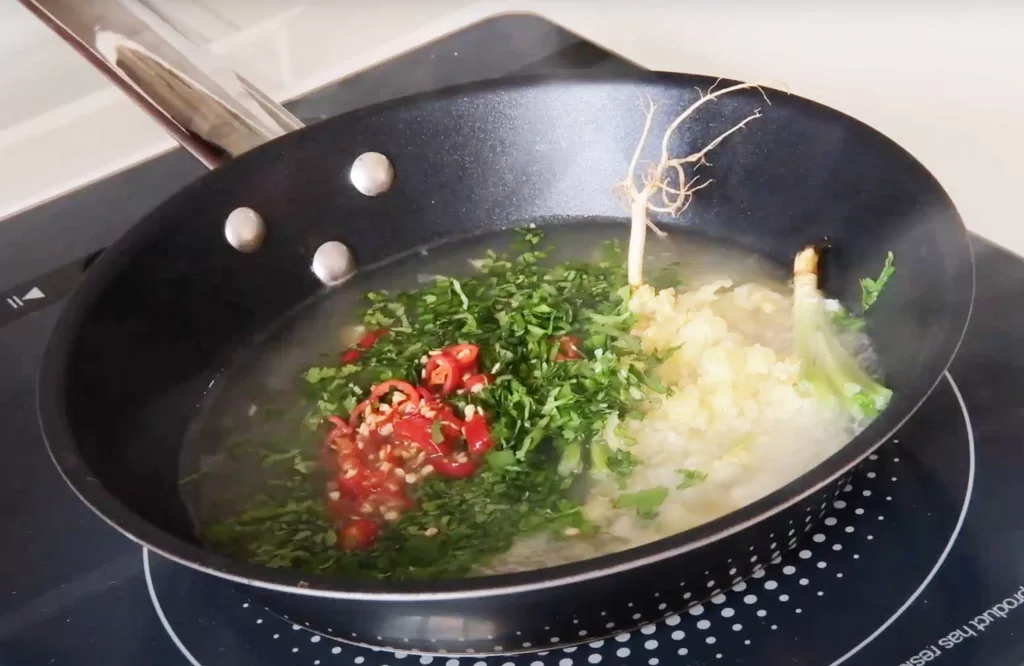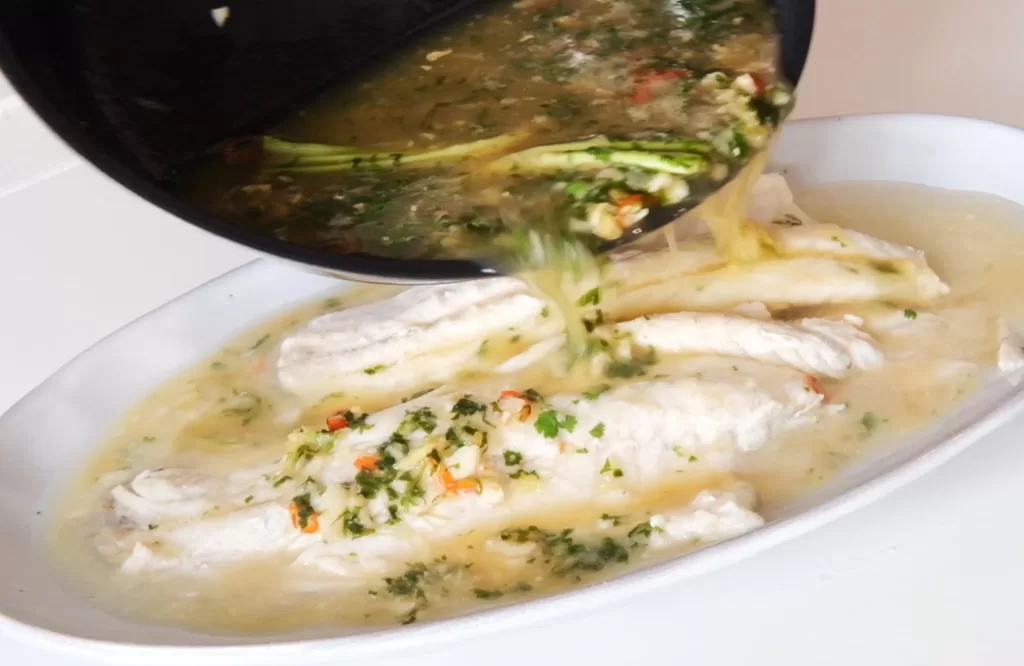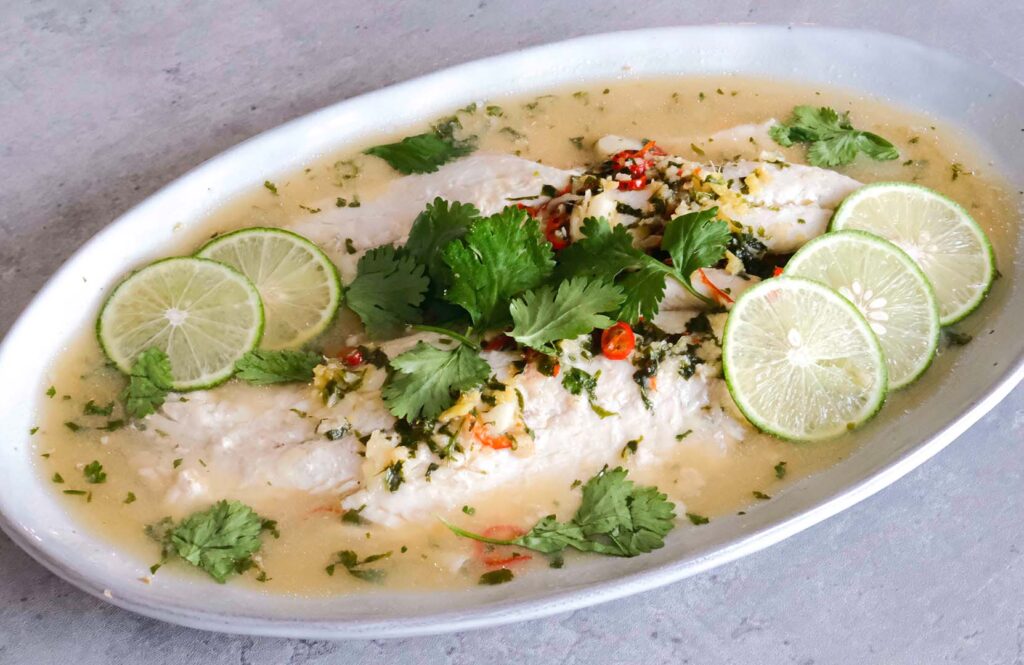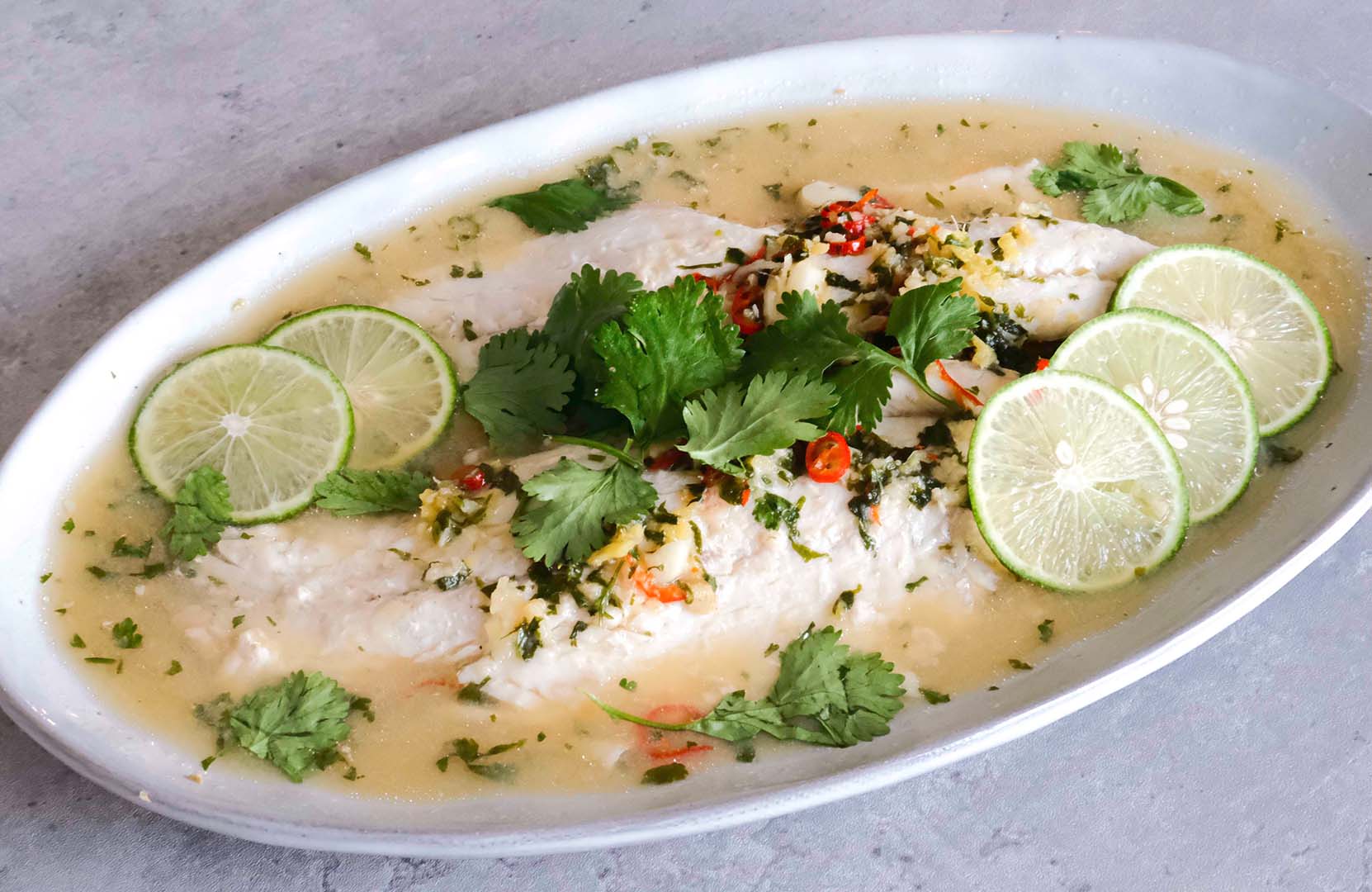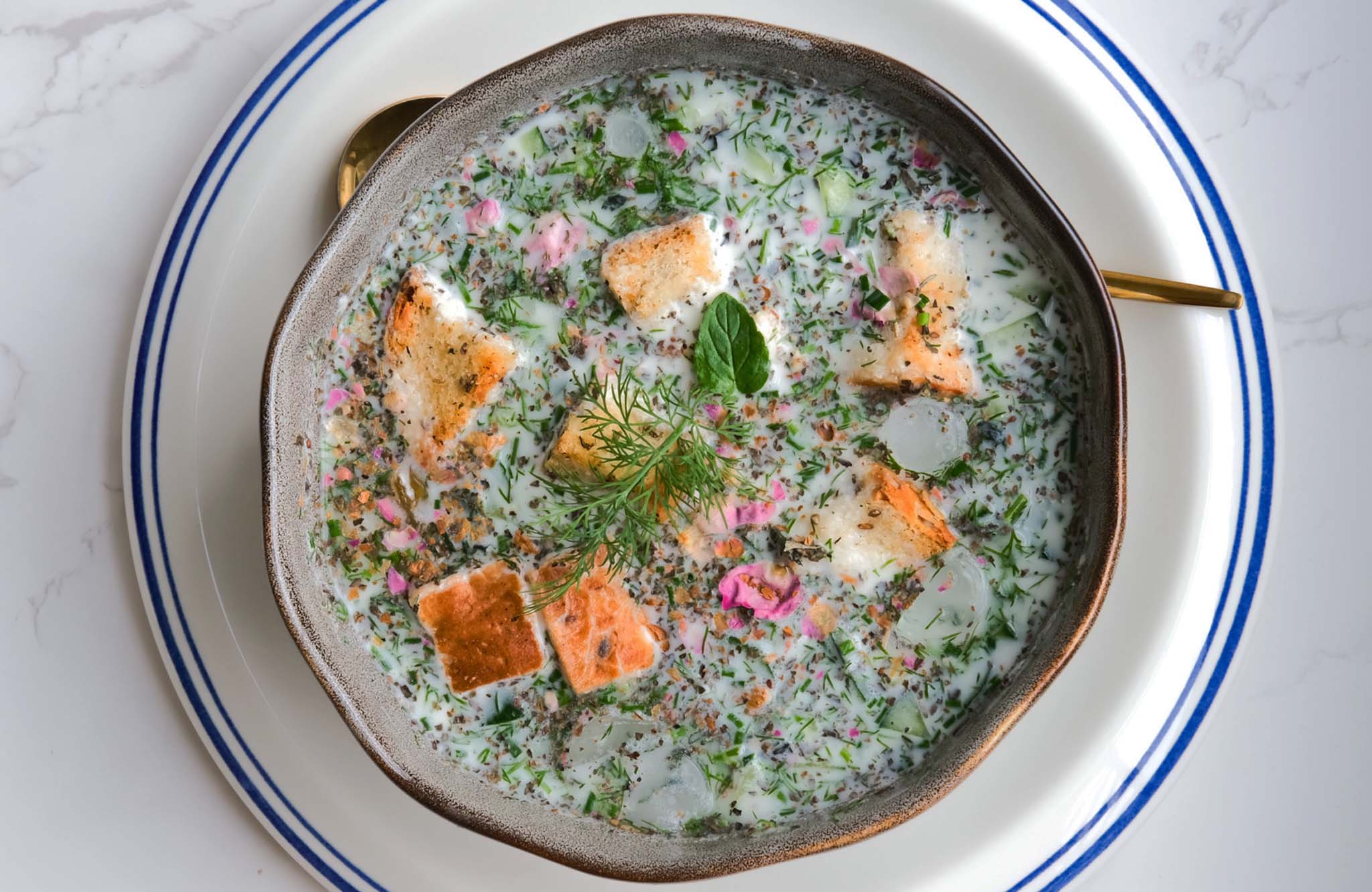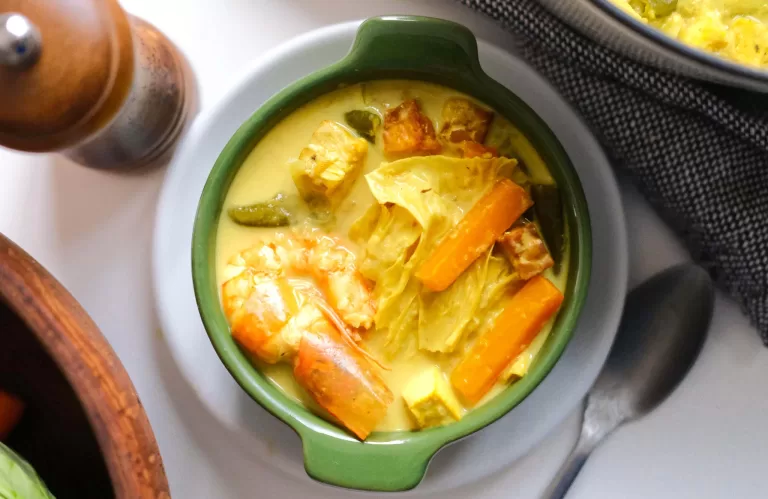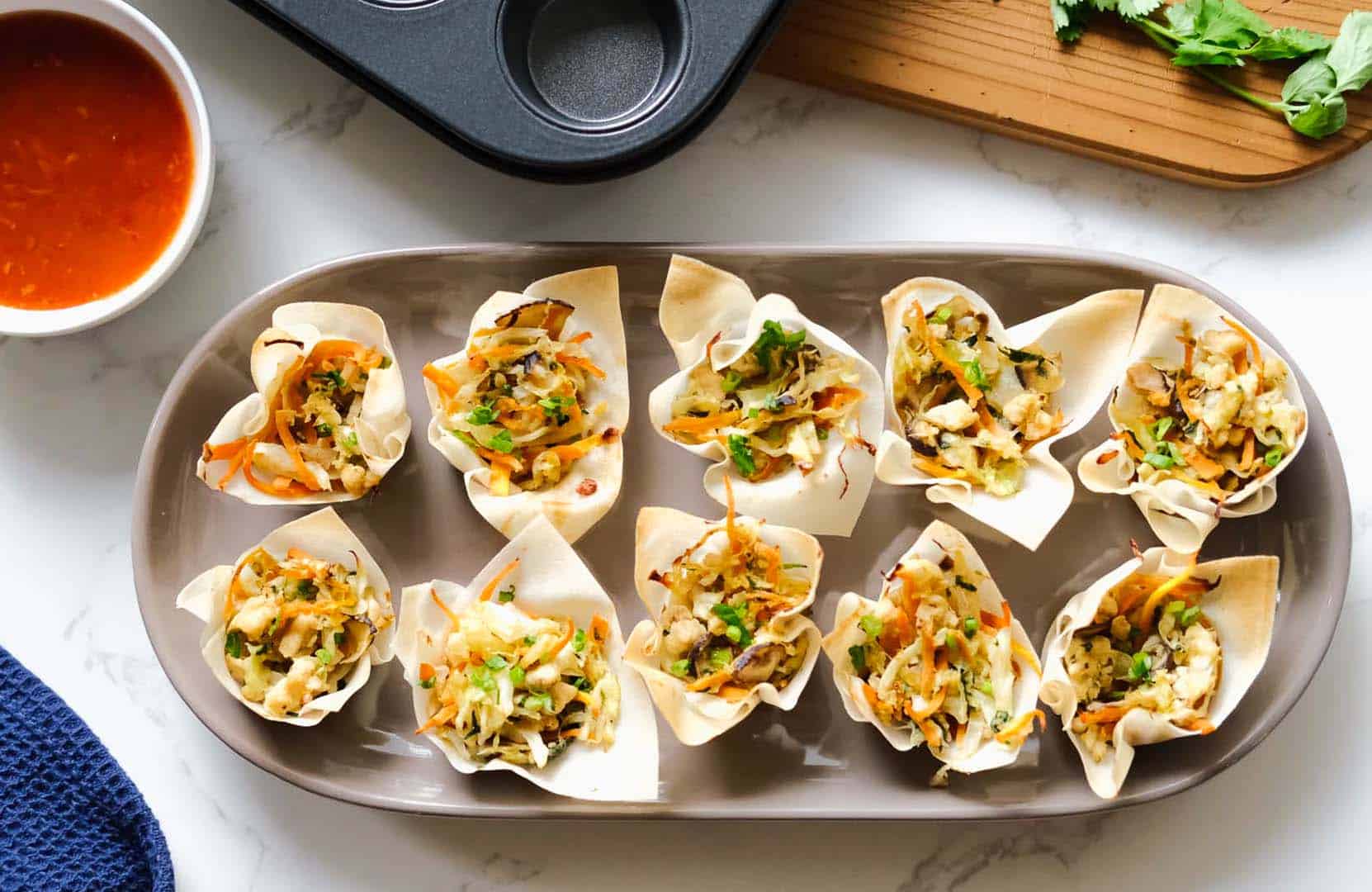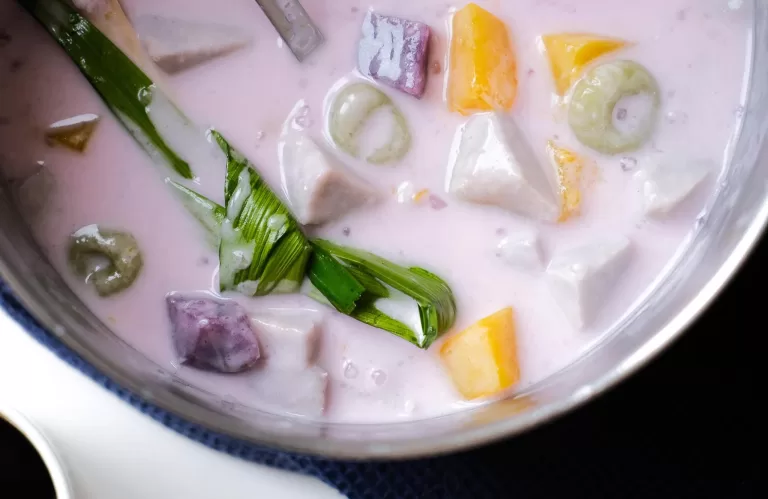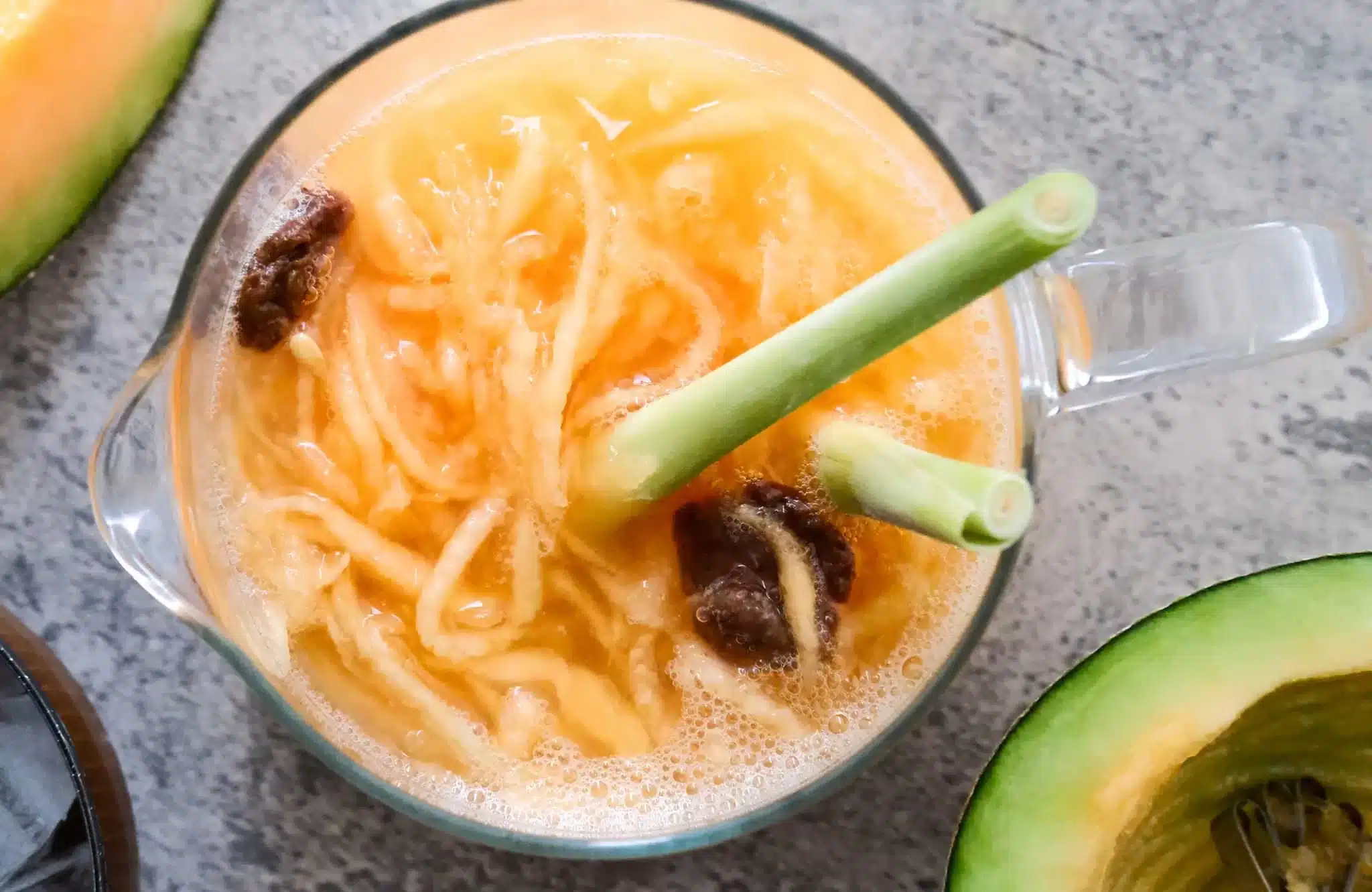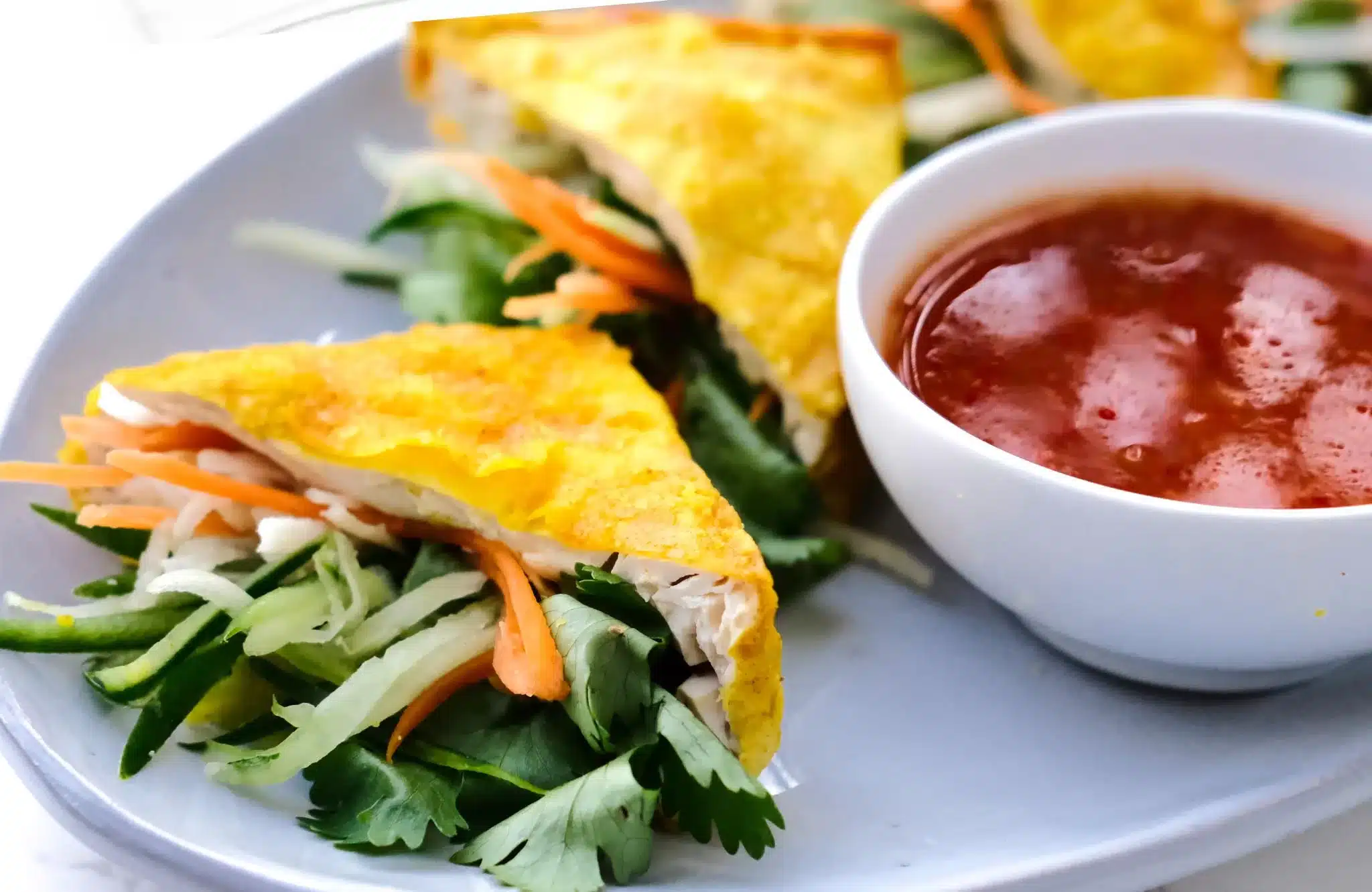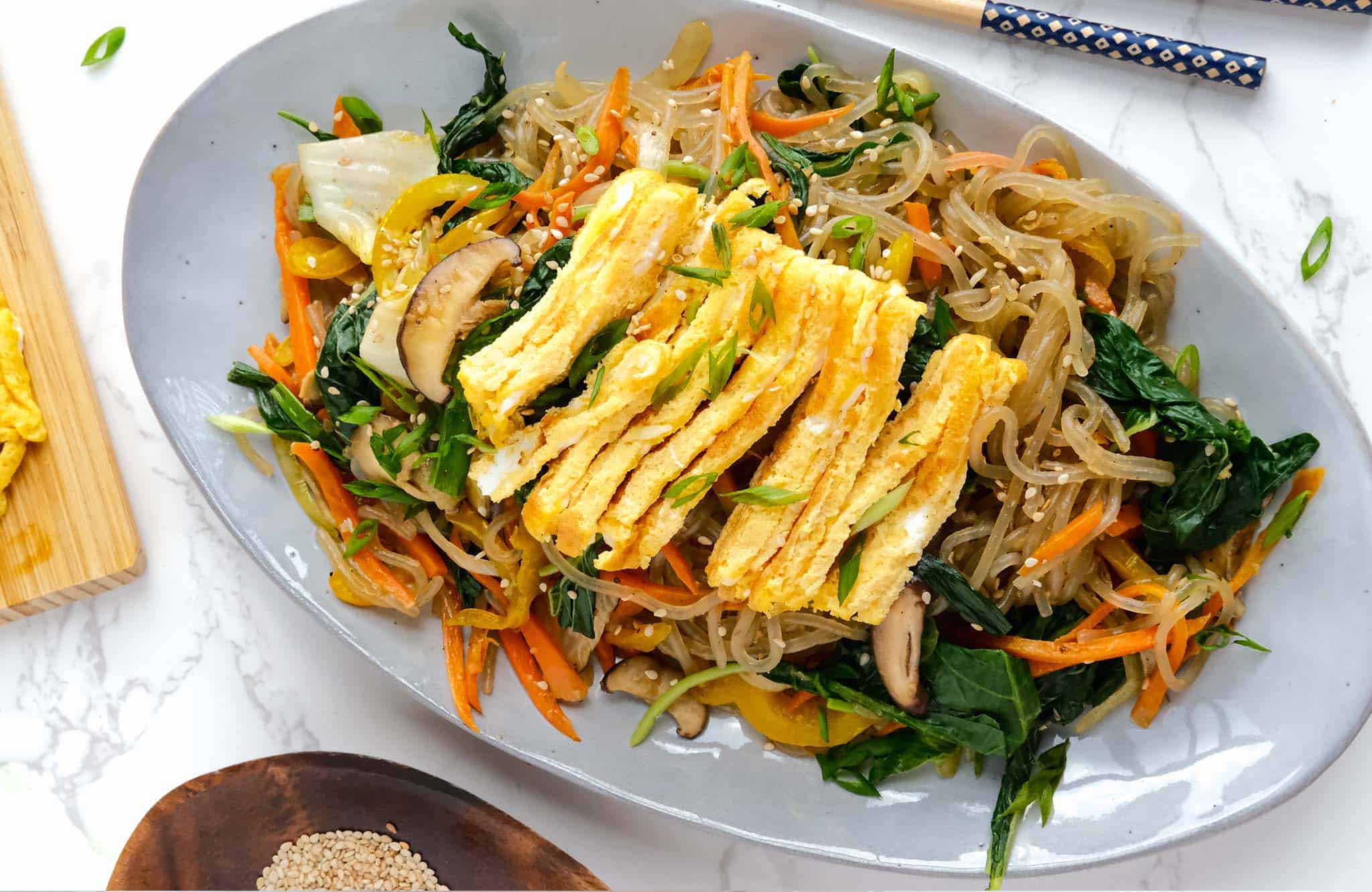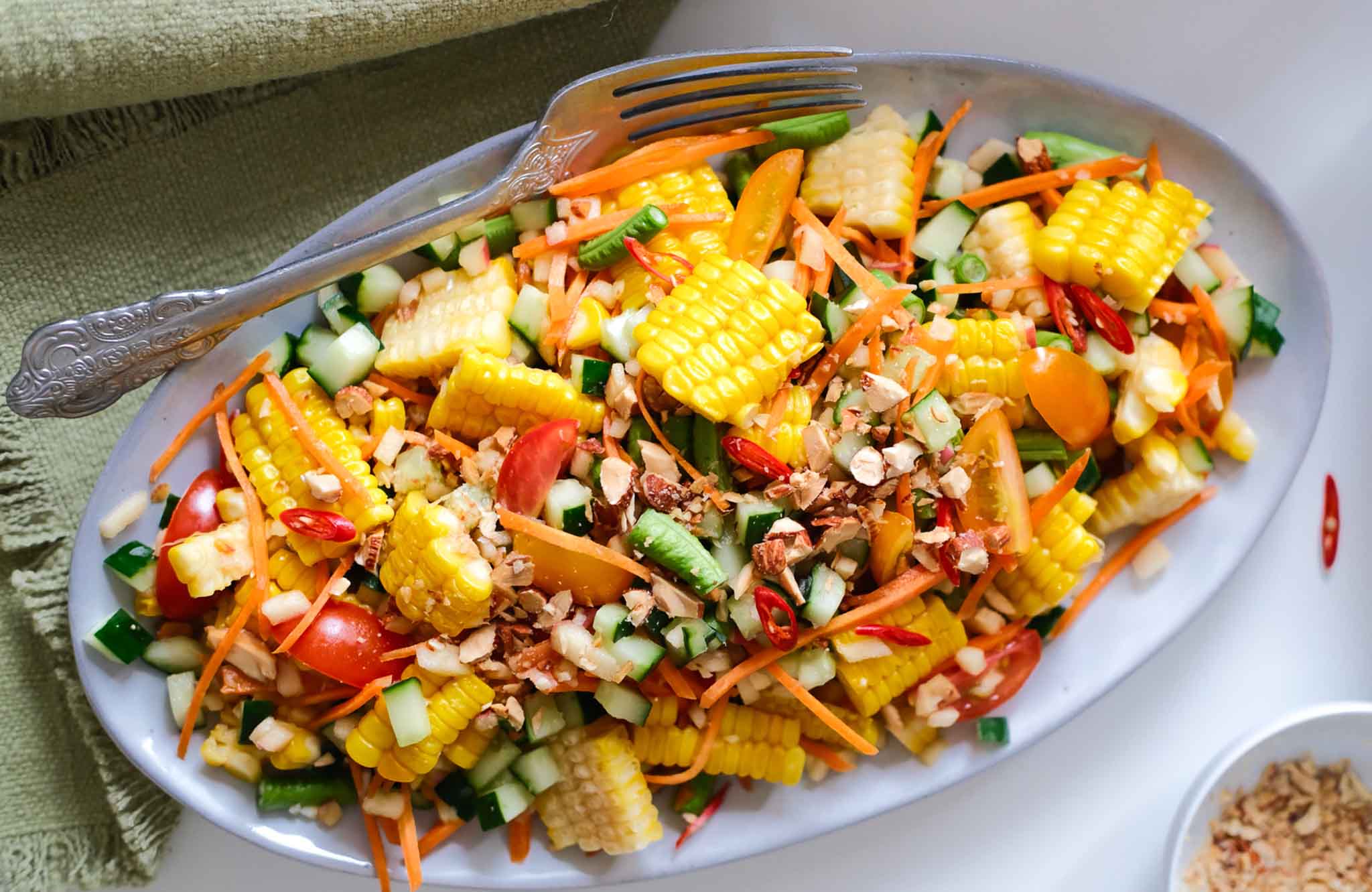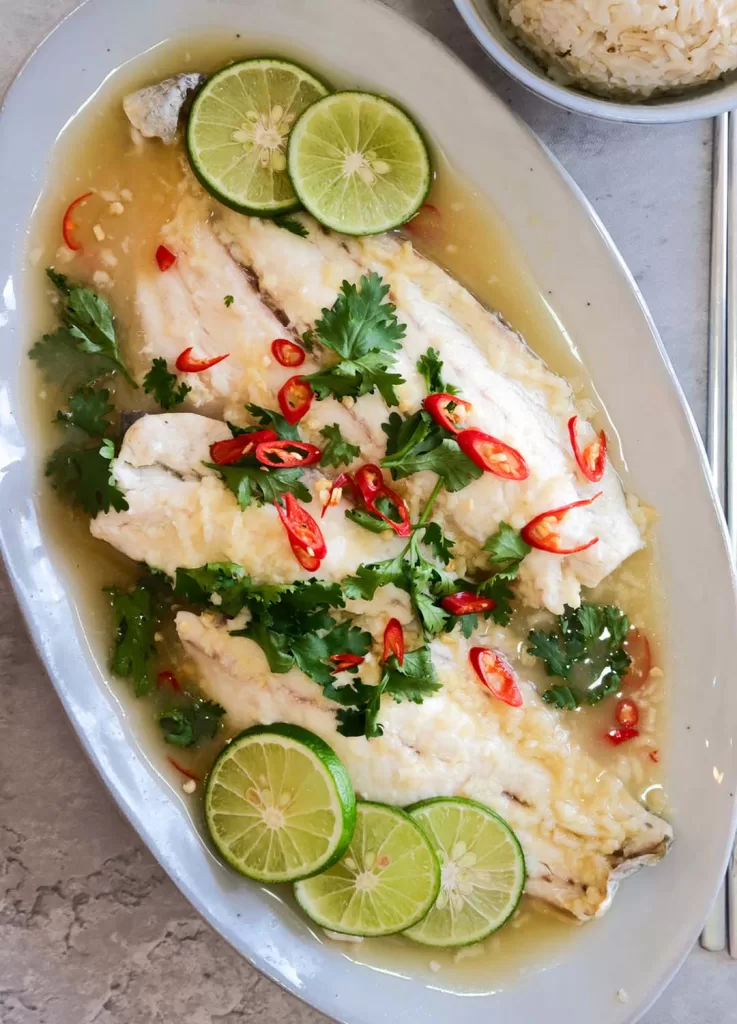
If you love Thai-style fish dishes, this recipe is for you! It’s made simple without a steamer and emphasizes high-quality ingredients that make it nutritious and tasty.
Naturally sweetened with zesty fruits instead of white sugar, the broth is rich in vitamin C and antioxidant goodness. Infused with aromatic ginger and garlic, it perfectly balances out the taste of the fish.
Table of Contents
- Cook this Oven-Steamed Fish with Garlic, Ginger, and Lime with me!
- Types of fish used in this Thai-style oven-steamed fish recipe.
- Tips when choosing a fresh fish at the supermarket
- Ingredients to make oven-steamed fish with garlic, ginger and lime
- How to make oven-steamed fish with garlic, ginger, and lime
- FAQ
- Other recipes you might like
As a Southeast Asian, I find this to be my number 1 favorite fish dish—nothing else comes close. I thought I was biased because I grew up with these flavor combinations, but even my husband, who’s not a fan of fish (at all), changes his mind about fish.
Recipe highlight: Authentic Thai flavor, soy-free, refined sugar-free and nutritious!
Not only flavorful with its zesty, aromatic taste, this healthy oven-steamed fish recipe is also nutritious. According to this study, steaming preserves more Vitamin C than boiling, and with garlic, ginger, and lime, it makes this dish nutrient-rich and anti-inflammatory!
I came across this steaming fish in the oven method when my steamer was too small to fit the fish. If you think only a specific oven will do the job, nope, you can use ANY oven.
Cook this Oven-Steamed Fish with Garlic, Ginger, and Lime with me!
Types of fish used in this Thai-style oven-steamed fish recipe.
When making Asian-style steamed fish dishes, there are a variety of white fish to use. These are some popular options listed from most to least common.
- White pomfret
- Grouper
- Barramundi
- Seabass
- Red Snapper
- Short Mackerel
- Nile Tilapia
Other choice
- Cod Fillet
In this recipe, I use barramundi. It’s what my mom always prefers when making this dish, plus it’s a popular choice to make Thai-style steamed fish. Feel free to choose according to your taste preference and accessibility.
If you are getting whole fish like mine, I suggest finding the freshest one possible and asking the fishmonger to debone the fish to save you a hassle.
Tips when choosing a fresh fish at the supermarket
To check if the fish is fresh, use your three senses: 👀sight, 🤚touch, and 👃 and smell.
- 👀 Check the eyes. The eyes should be transparent and shiny, like how they look when swimming in the aquarium. Avoid the ones that are cloudy, bulging, and discolored.
- 👀 Look for the color of skin and body. The fresh ones have a shiny metallic scale, with white and slightly pinkish meat (which indicates fresh blood). It should not look bruised and brownish.
- 🤚 Lift the fish with your palm, if it’s slimy and slides through your hand effortlessly, it’s a good sign. The slime is the fish’s natural protection layer that protects them from diseases and parasites when alive.
- 👀 Peek at the gill to see if it is red or bright magenta, closer to blood. If it is greyish, high chance it’s been dead for days.
- 🤚Try poking the body with your finger to see if it is firm and bounces back. If it leaves a dent, it is not as fresh.
- 👃Old fish smells foul or too ‘fishy’. You will immediately know if the smell is rotten. If you don’t know how to differentiate, if the fish meets all the above criteria, most likely, it’s just the natural fish smell.
Ingredients to make oven-steamed fish with garlic, ginger and lime
- Fresh garlic & ginger – Grate the fresh ginger and garlic for maximum and even flavor distribution.
- Chicken stock – I use all-natural, low-sodium stock.
- Pineapple juice – I use it as a natural sweetener rich in Vitamin C & anti-inflammatory properties. Freeze in ice cube molds for convenience. Double the amount if you skip the sugar.
- Key lime juice – A key citrusy flavor in this recipe. Try not to swap it with lemon if you like it authentic.
- Coriander (Cilantro) – Adds bold flavor & aroma, coriander enhancing seafood dishes in Thai cooking. This recipe uses both roots and leaves.
- Lemongrass – Used for aroma, lemongrass is not meant for ingesting. Stick to the lemongrass stick for easy removal. If the paste is all you have, go for it.
- Palm Sugar (Optional) – An unrefined sugar alternative. You can also swap this for extra pineapple juice instead.
- Fish Sauce – When it comes to condiments, I’d go for the purest form, like Red Boat Fish Sauce (no MSG, sugar, or preservatives).
Depending on the type of fish, good quality fish sauces contain amino acids and omega-3.
- Scallions (Spring Onion) – Use the green part for garnish.
- White fish – Your choice of white fish, deboned and cut into fillet.
How to make oven-steamed fish with garlic, ginger, and lime
- Wrap and oven-steam the fish. Line aluminum foil in a tray or oven-safe ceramic dish and transfer the fish to it. Place the bruised lemongrass under the fish and seal the package. Transfer the tray to the oven and let it steam in a preheated oven over 200C/400F for 15-20 minutes (depending on the fish’s size). I use a regular convection oven.
- Prepare the broth on a stove – Mix all ingredients except lime and pineapple juice, and bring it to a simmer over medium heat for about 2-3 minutes. Turn off the heat, then add lime and pineapple juice and give it a stir.
- Mix the broth and fish – Once the oven timer is up, transfer the steamed fish to a serving dish and pour the broth on the fish.
- Garnish and serve – Garnish with coriander and scallion. Enjoy it with a warm bowl of rice.
✏️ Notes: The broth only needs to be cooked for a short time because the ingredients are delicate and will turn bitter if cooked for a long time.
FAQ
What oven should you use when steaming the fish?
You can steam fish in any oven. Just make sure you cover the fish or wrap it with aluminum foil. The fish will release its liquid and steam from the water.
How to steam fish in the oven if you don’t have a steamer?
If you don’t have a steamer, you can steam it with an oven like I do in this steam fish recipe. Like a standard steaming method with a steamer, the water vapor needs to be trapped in a covered space to cook the fish. The cover can be aluminum foil or parchment paper. The steps are as follows:
- Lay the fish on the foil with liquid ingredients, like a few tablespoons of chicken stock.
- Seal the packet of foil and allow some space for the water vapor.
- Place sealed fish packets in the preheated oven for 15-20 minutes (depending on the fish’s size) over 200C/400F.
- To check if the fish is fully cooked, gently pierce the inside with a fork. Ff it’s white and no longer pink, it’s good to go.
Other recipes you might like
- THAI HOT AND SOUR CHICKEN TOM YUM SOUP OR TOM YUM GAI
- AUTHENTIC TOM YUM NAM SAI WITH PRAWN
- THAI MANGO SALAD
- VIETNAMESE LEMONGRASS CHICKEN NOODLE SALAD
Oven-steamed fish with garlic, ginger and lime
3
servings15
minutes20
minutesMade simple without a steamer, but using the oven to steam, this Asian style steam fish emphasizes high-quality ingredients that make it nutritious and tasty.
Ingredients
- For ingredients notes & substitution jump here
2 fillets of white fish / 1 whole fish – See what types of fish you can use and tips on choosing a fresh fish.
2 stalks of lemongrass – smashed/ bruised
- Broth ingredients
4 cloves of garlic – Pressed or grated to get the most flavor
8g ginger – Pressed or grated
1-2 bird’s eye chilli – Thinly sliced (optional if you can’t tolerate spicy)
2 stalks of coriander with roots – Separate the root and leaves. Thinly chop the leaves, and use the root to infuse the flavor. Make sure to wash it clean.
2 tbsp of natural fish sauce – I use Red Boat Fish Sauce
1 tsp of palm sugar (optional)
1/2 cup of all-natural chicken stock
- Juice (add last when the broth is cooked)
3 tbsp of lime juice
4 tbsp of pineapple juice (Add 2 more tbsp if you choose not to add sugar)
- Garnish
Coriander leaves / Spring onion
Directions
- Wrap and oven-steam the fish. Scroll above for a visual guide
❶ Line aluminum foil in a tray or oven-safe ceramic dish and transfer the fish to it.
❷ Place the bruised lemongrass under the fish and seal the package.
❸ Transfer the tray to the oven and let it steam in a preheated oven over 200C/400F for 15-20 minutes (depending on the fish’s size). I use a regular convection oven. - Cook the broth on the stove
❶ Mix all ingredients except lime and pineapple juice in a saucepan, and bring it to a simmer over medium heat for about 2-3 minutes.
❷ Turn off the heat, then add lime and pineapple juice and give it a stir. - Mix the broth and fish – Once the oven timer is up, transfer the steamed fish to a serving dish and pour the broth on the fish.
- Garnish and serve – Garnish with coriander and scallion. Enjoy it with a warm bowl of rice.
Recipe Video
Notes
- Skip the chili or change to a milder chili if you can’t tolerate spicy.
🥣 Did you try this recipe? Let me know your thoughts in the comment below.



